Desert Dragway – An Oasis of Fast Cars and Burning Rubber
Like a mirage in the barren desert, the towering grandstands that overlook the high bank turns at Las Vegas Motor Speedway emerged out of the early morning hazy horizon. Travelling northbound, Interstate 15 – the main artery that flows travelers through the state of Nevada – starts to clot up through the Las Vegas city limits, but it begins to clear. The multi-purpose racing facility comes into view as we stare out the windshield of our rental Dodge Durango and into the distance. This town in the desert is known for its gambling, casinos, shows, never-ending growth and, of course, Elvis. But the speedway, just north of all the bright lights and sidewalk hustlers preying on countless tourists along Las Vegas Boulevard, is really where the action is.
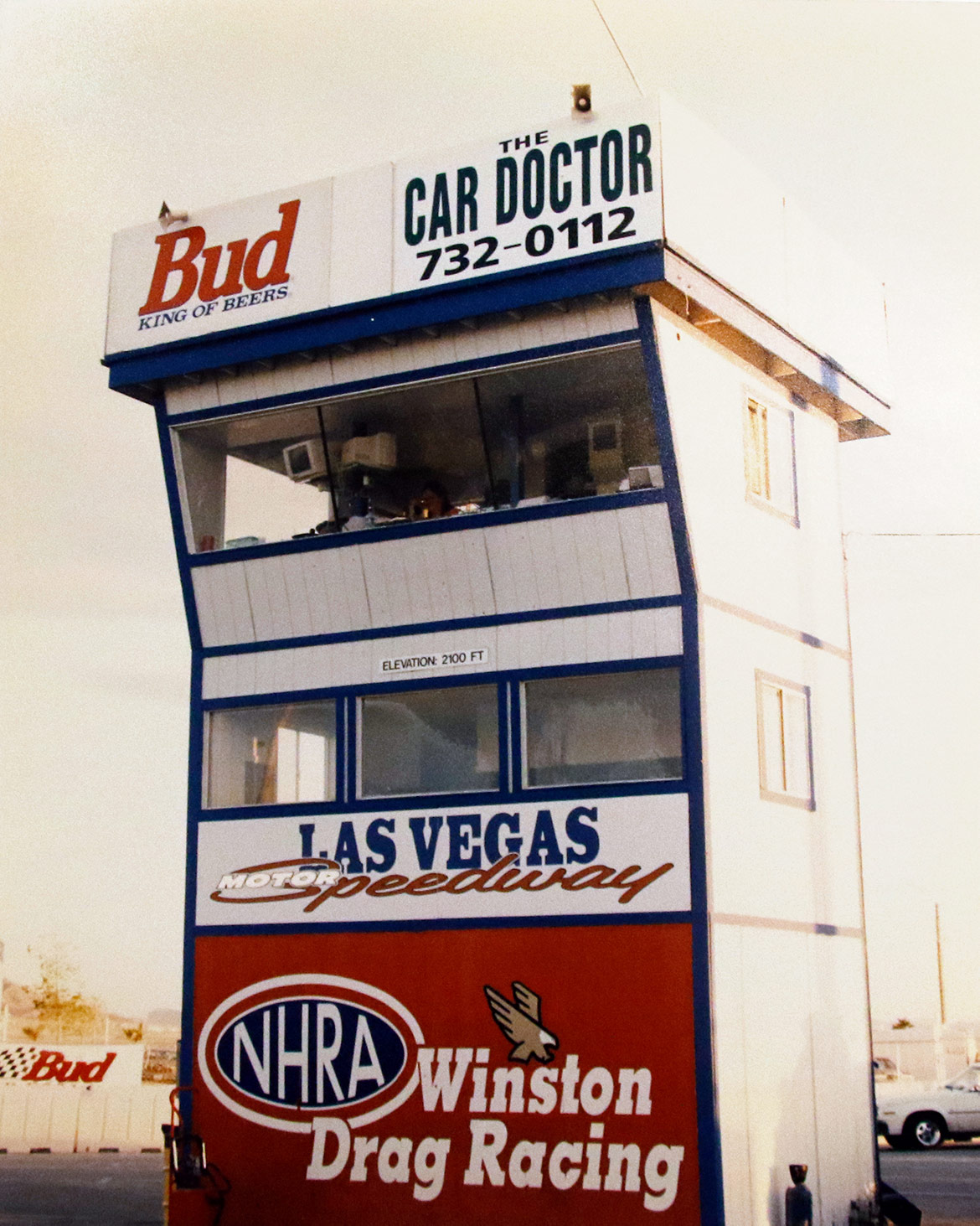
The Las Vegas Motor Speedway (LVMS) began life not as a totally new venture to bring a racing facility to the town, but as a much improved one. Back in the day, Las Vegas Raceway Park was the place to get your need for speed. It consisted of a drag strip, 3/8-mile paved oval and road course. The decision was made over two decades ago to expand the facility and was spearheaded by Richie Clyne with assistance from then Sahara owner Bill Bennett and Imperial Palace owner Ralph Engelstad. The property in and around the old Las Vegas Raceway Park made the location ideal for building a NASCAR superspeedway and a major league drag racing track. There were also plans to add a half-mile clay oval track at LVMS during the initial design phase.
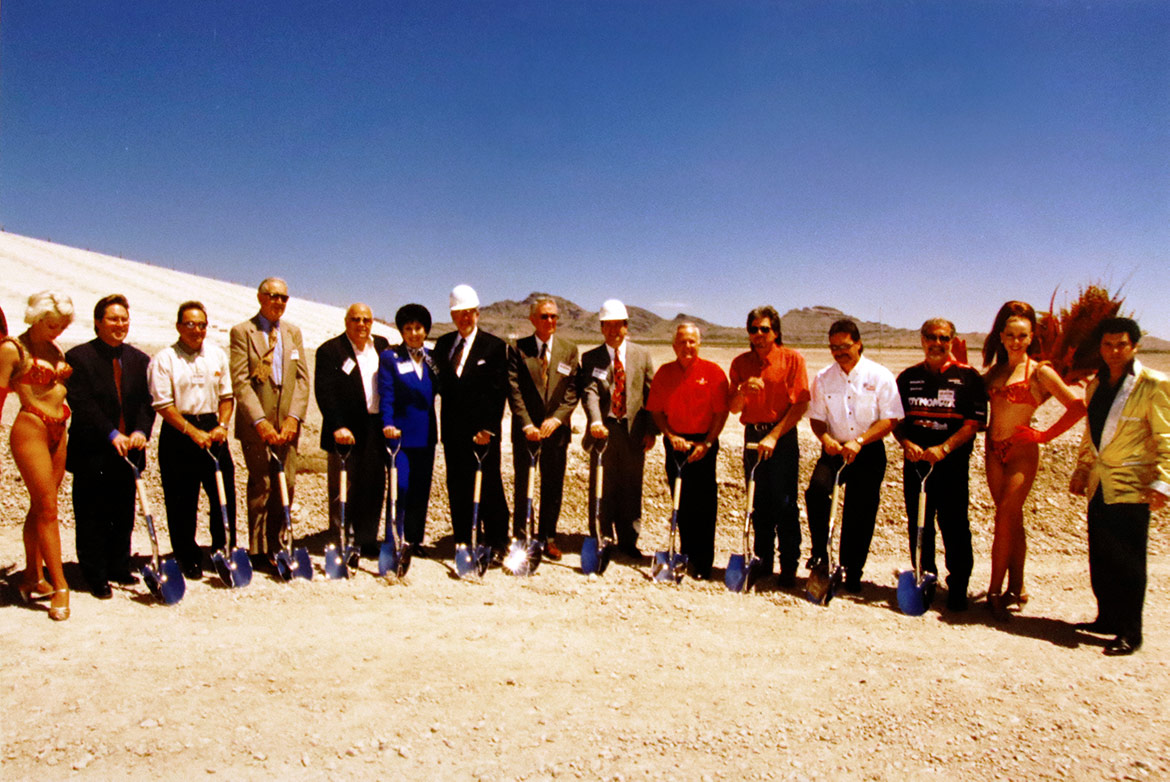
Ground was broken on the new facility in 1996, but it was just for the superspeedway. However, even though concrete had been poured for the grandstands and the ground had been leveled for the drag strip around the same time, it was never finished. Without the guarantee of an NHRA national event, the previous owners never completed construction of the quarter-mile track. Once Speedway Motorsports purchased the facility in late 1998, it became a priority to secure an NHRA event and complete construction on the drag strip. The first NASCAR Cup Series race was held at LVMS in March of 1998, while the first NHRA event was in April of 2000. Now, the LVMS with its 72,000 permanent seats for the speedway and 22,000 permanent seats for the dragstrip, is around 1,000 acres in total between the two race tracks. It plays host to a dozen distinct racing venues throughout the year, including IndyCar, Red Bull Air Race and the SRO GT Blancpain World Challenge for sports cars. LVMS is also home for the Electric Daisy Carnival, which is the largest dance music festival in North America. More than 150,000 people come in per day for this three-day event. Since the LVMS sits within Clark County and not the city limits of Las Vegas, the area has seen extreme growth over the past two decades on facilities that will benefit the region. Back in 2014, The Strip at Las Vegas Motor Speedway also provided the photoshoot backdrop for the earth-shattering 2015 Dodge Challenger SRT® Hellcat before the car was even announced to the public.
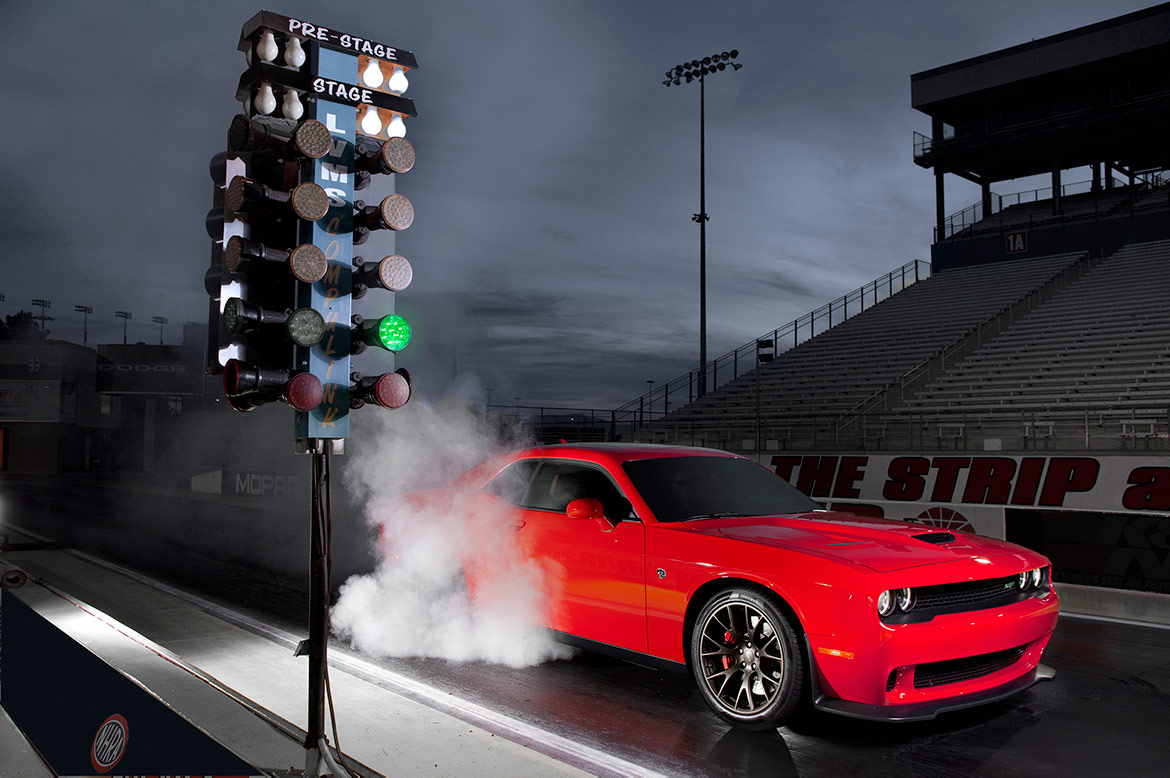
The Strip at Las Vegas Motor Speedway has also hosted two NHRA National events a year for over a decade. The spring race, usually held in April, just saw a major change in venue with the introduction of four-wide racing in 2018. Las Vegas Motor Speedway’s sister track, zMAX Dragway in Charlotte, also runs the four-wide format at its spring event and it’s become a sensory overload for both the fans in the stands and the racers competing. What some folks don’t know is Speedway Motors founder and executive chairman Bruton Smith had initially wanted to make Las Vegas four lanes when it was built in 2000, but NHRA wasn’t quite ready for four-lane drag racing at the time. So when the track was built, the infrastructure was already there to make it four lanes. The right side scoreboard was off-set from the track and the land was graded back then. So it didn’t take as much work to expand from two to four lanes. The biggest challenge was simply having to close the busiest drag strip in the country for a few months to complete the construction. Between the weekly and regional racing programs, as well the corporate events, the drag strip is used about 40 weekends per year. So LVMS had to cancel some events and delay others to accommodate construction.
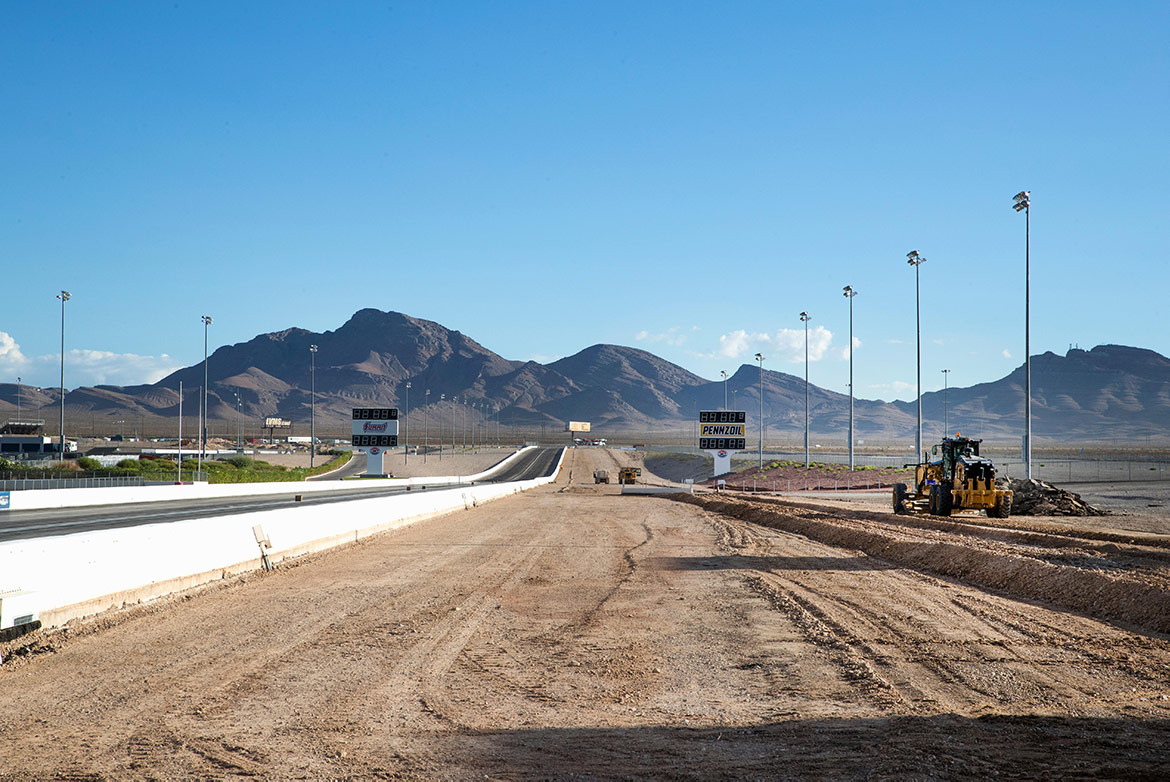
The second yearly NHRA national event held at LVMS will be the Dodge NHRA Vegas Nationals this weekend. It’s the second-to-last race of the year and an important one as the racers in the Pro classes are chasing valuable points to claim a world championship. Since this event is part of NHRA’s Countdown to the Championship, the track will go back to the traditional two-wide format as every round of qualifying and eliminations is hyper-critical and has a points value that gets tallied up at the end of the race. Here, our Don Schumacher Racing (DSR) drivers will fire up their Dodge Charger SRT Hellcat Funny Cars and thunder down the strip, while Leah Pritchett will blaze the surface of the track with her 11,000-horsepower supercharged HEMI® engine-powered Dodge//Mopar® Top Fuel Dragster.
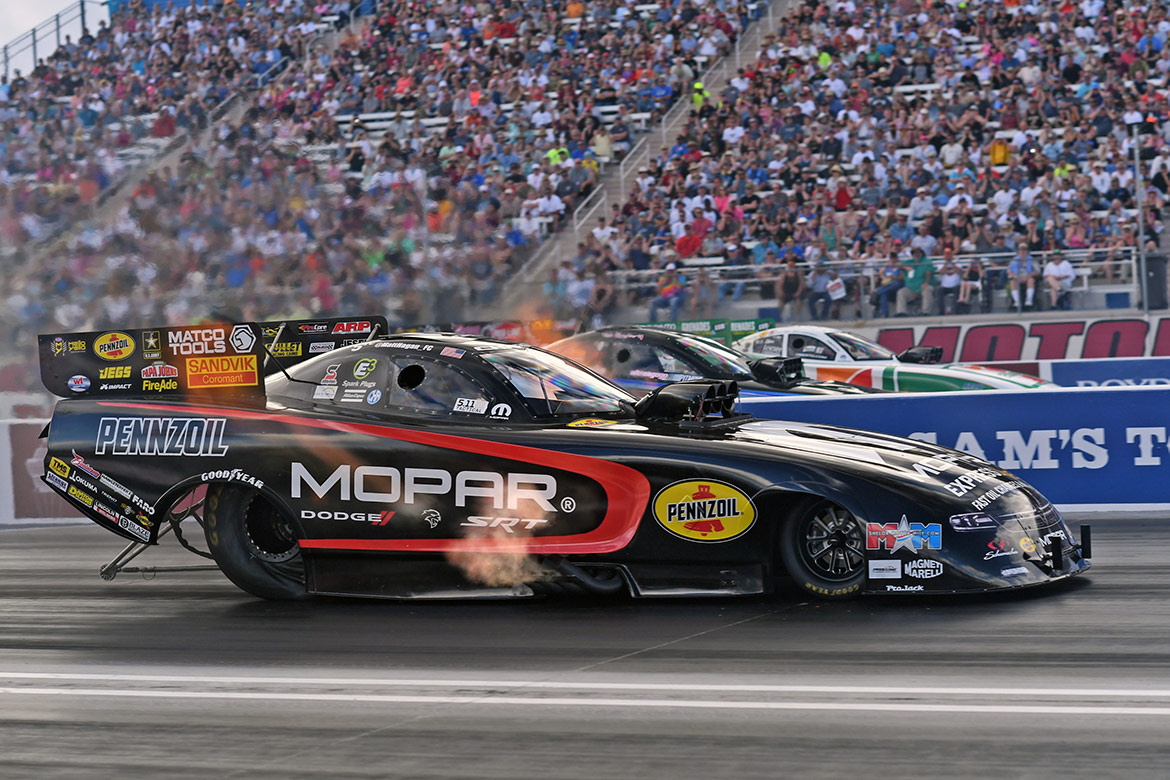
The stakes are high and unknown for the drivers competing this weekend, but the future for LVMS looks bright and clear. This oasis of speed and high performance in the middle of the desert is a welcome relief for speed junkies and high-octane addicts looking to get their fix of nitro, burning rubber and going fast.
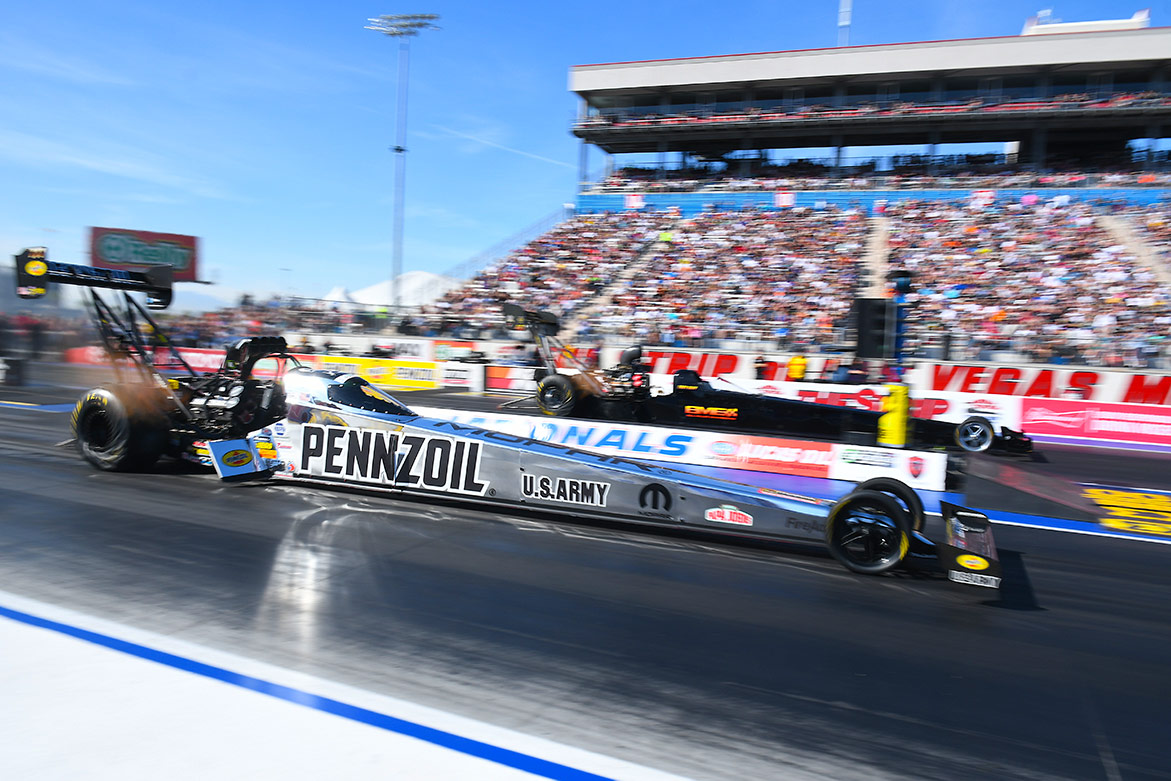
Check out these cool pics of The Strip at Las Vegas Motor Speedway!

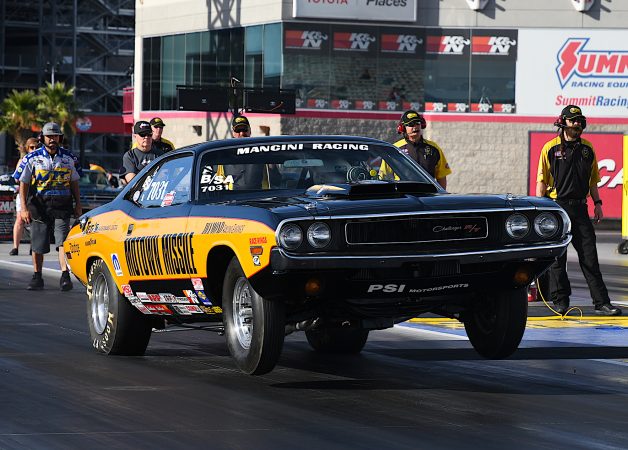
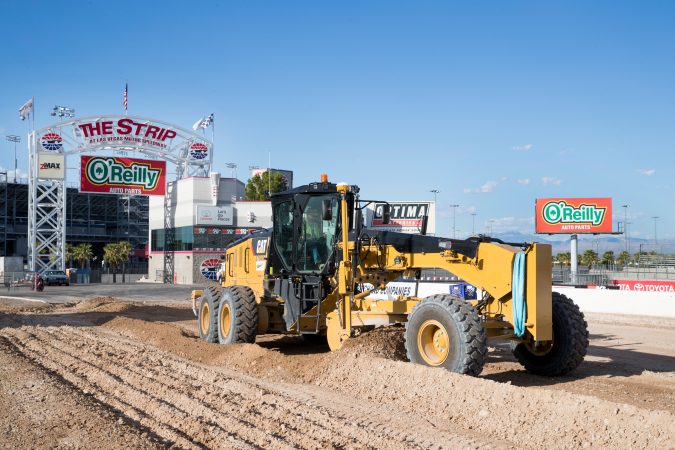
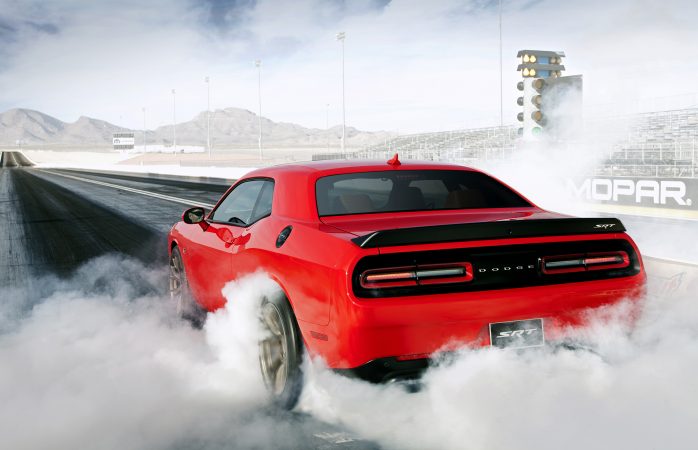
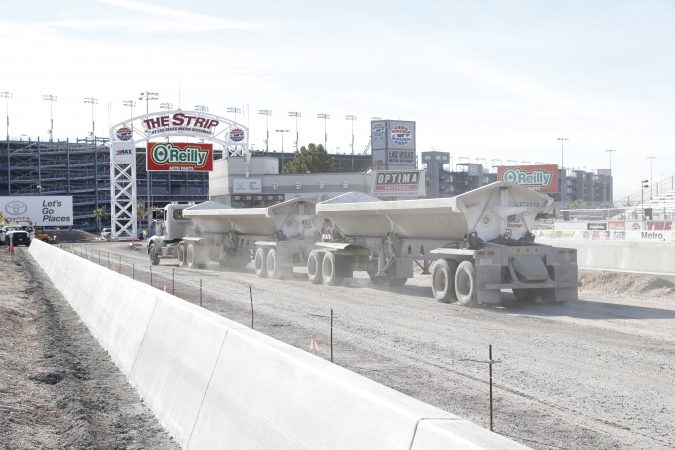
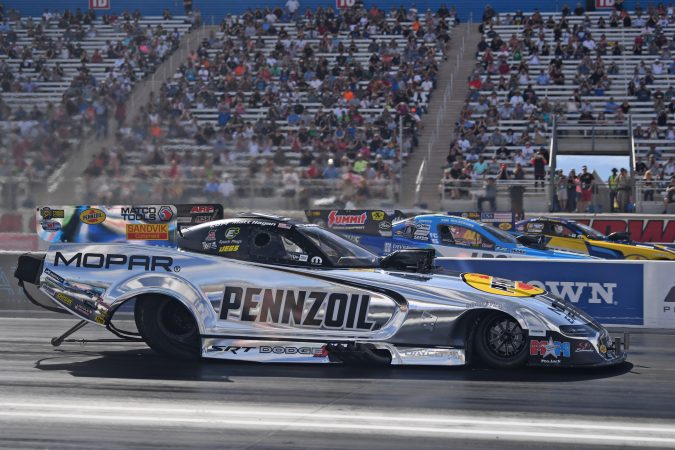
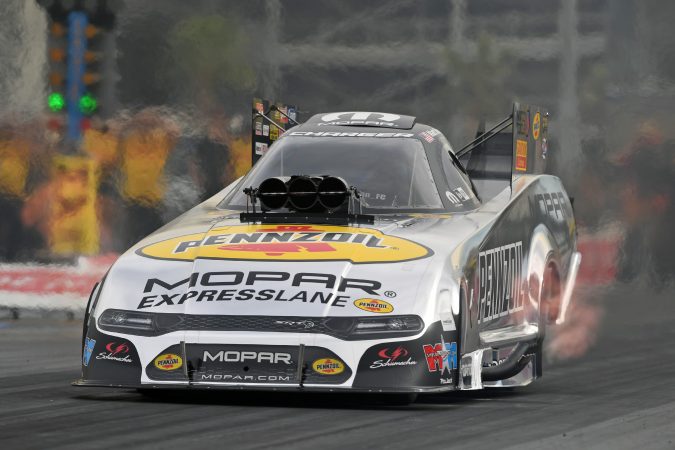
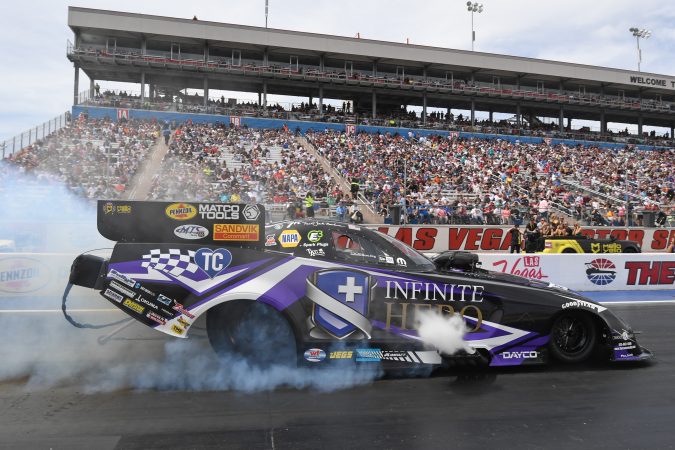
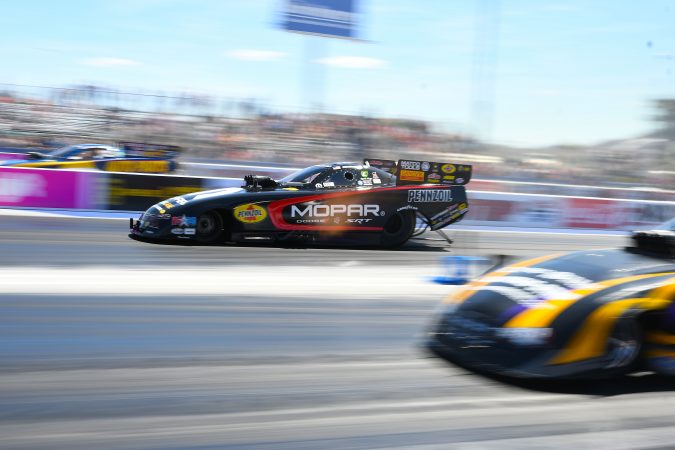
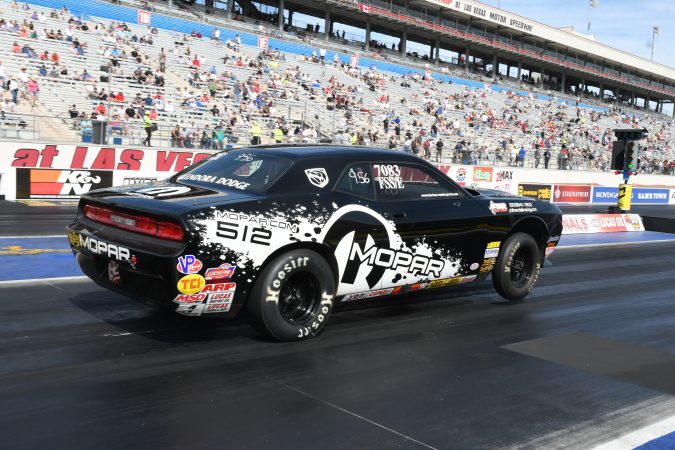
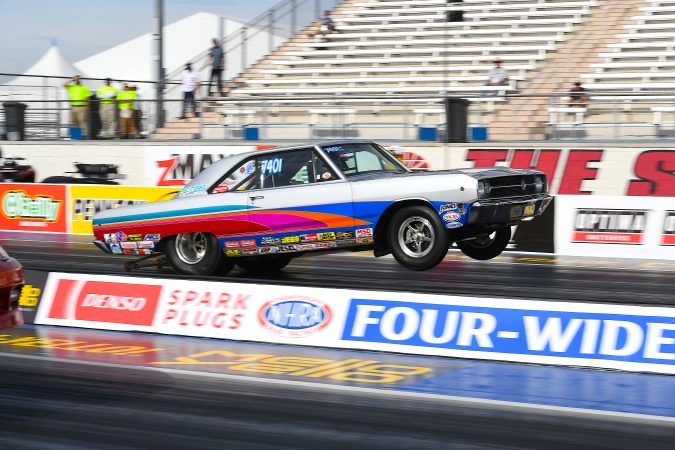
0 Comments